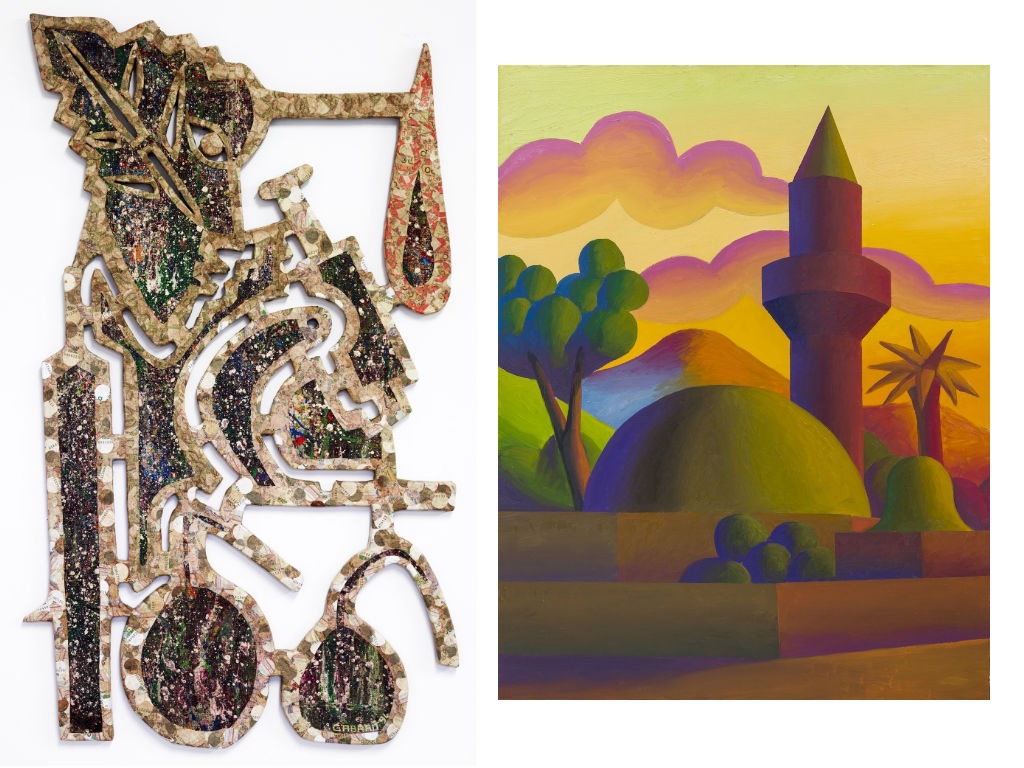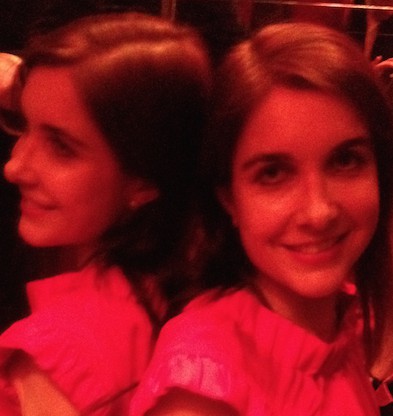The J1 location helped to breathe a buzzy air into the fair, which assembled 31 upcoming galleries showcasing works primarily by emerging, lesser-known artists. Indeed, while the Rudy Ricciotti-designed Mucem (Museum of the Civilizations of Europe and the Mediterranean) “hosts” Ai Weiwei's exhibition 'Fan-Tan' and the Kengo Kuma-designed FRAC Marseille spotlights Claude Lévêque, Art-O-Rama continues to pursue its vocation as a discovery fair.
“Art-O-Rama is mainly dedicated to the discovery of new talents, so it's easier to sell very young artists than confirmed ones,” Olivier Meesen, co-founder of Meesen De Clercq (Brussels), participating for the sixth time, says. “This year, we promoted two artists, Aurélien Froment and Benoît Maire, both around 40 years old, who have solid, international careers but are paradoxically little represented in the collections of southern France or northern Italy. The audience responded and we sold pieces by both artists.” While Froment's works deal with memory, Maire's paintings and sculptures reflect on the natural and man-made world, such as a hybridised sculpture, priced at €5,800, half-formed by a shell, half-formed by a blue, crystal horse.
 What's appealing for the galleries is that exhibiting in Art-O-Rama only costs €2,700, which alleviates some of the commercial pressure. Galerie Crèvecoeur (Paris/Marseille), an Art-O-Rama committee member which opened a space in Marseille last year, adding to its pre-existing space in Paris, shared a stand with Norma Mangione Gallery (Turin), splitting the costs. Norma Mangione was presenting paintings by Salvo (1947-2015), an Italian artist whose colour-saturated landscapes of ports and cities, priced €12,000-32,000, are characterised by geometric shapes and vivid sunsets, in a dialogue with Miho Dohi's abstract sculptures, priced at €4,000, presented by Crèvecoeur.
What's appealing for the galleries is that exhibiting in Art-O-Rama only costs €2,700, which alleviates some of the commercial pressure. Galerie Crèvecoeur (Paris/Marseille), an Art-O-Rama committee member which opened a space in Marseille last year, adding to its pre-existing space in Paris, shared a stand with Norma Mangione Gallery (Turin), splitting the costs. Norma Mangione was presenting paintings by Salvo (1947-2015), an Italian artist whose colour-saturated landscapes of ports and cities, priced €12,000-32,000, are characterised by geometric shapes and vivid sunsets, in a dialogue with Miho Dohi's abstract sculptures, priced at €4,000, presented by Crèvecoeur.
Art-O-Rama was founded by Jérôme Pantalacci – the first edition having only five exhibitors – whose aim was to maintain the vision of the late gallerist Roger Pailhas who had established a previous fair, Art Dealers, in Marseille. “My idea was to continue this [summer fair] moment with art players from outside Marseille to nourish the city,” Pantalacci says, adding that this edition includes 15 first-time participants.
 Sustained interest in Art-O-Rama has been boosted by the city being the European City of Culture in 2013 and the inauguration of the Mucem and FRAC Marseille that same year. Furthermore, the next edition of Manifesta, the contemporary art biennale (taking place this year in Palermo), will be held in Marseille in 2020.
Sustained interest in Art-O-Rama has been boosted by the city being the European City of Culture in 2013 and the inauguration of the Mucem and FRAC Marseille that same year. Furthermore, the next edition of Manifesta, the contemporary art biennale (taking place this year in Palermo), will be held in Marseille in 2020.
Against this cultural backdrop, exhibitors also like the timing of the fair. “Art-O-Rama takes place at a good time that enables us to communicate on our September exhibitions and Fiac [France's international contemporary art fair] programme in October,” says Antoine Laurent, director of In Situ - Fabienne Leclerc (Paris), whose sales included sculptures by Vivien Roubaud, Meschac Gaba and Amir Nave.

Left: Meschac Gaba
Peinture sculpture Médecine, 1994
Paint, collage of confetti of CFA banknotes on wood. Right: Salvo Bosnia Erzegovina [Bosnia-Herzegovina].
Among the foreign galleries was Marfa (Beirut), with a solo show of the Lebanese filmmaker and video artist, Rania Stephan. Besides films, on view were photographs of Cinema Rivoli, which was damaged during the Lebanese Civil War and ultimately destroyed by the city of Beirut as part its reconstruction process. 'Cross Fade 2' (2018) is a superposition of an image of the cinema's explosion conducted by the city and a black-and-white archived image of the cinema. “The advert of the Orient watch brand on top of the building indicates how the artist wanted to suspend and trap this moment [of the cinema's explosion],” Cherine Karam, a director at Marfa, explains.
Design at Art-O-Rama
For design lovers, the first-time participation of the Villa Noailles (Hyères) was a highlight. Villa Noailles was presenting the work of the two winners of last year's Design Parade: a hand-painted series of vases and drawings by Alexandre Benjamin Navet, who won the Grand Prix Design Parade Toulon Van Cleef & Arpels, and a series of indoor fountains and tables by Arthur Hoffner http://www.arthurhoffner.fr, who won the public prize.

Design Parade Toulon, running until 30 September and organised by Villa Noailles, features a Collector's Room designed by Navet, comprising a display cabinet with alcoves adorned with Navet's brightly coloured drawings and showcasing diverse, decorative objects. Meanwhile, Design Parade Hyères at Villa Noailles, also until 30 September, features a presentation of Hoffner's fountains – sculptural compositions made from various materials that reinvent fountain forms with idiosyncratic humour. http://villanoailles-hyeres.com/festival-2018/pw/festivals/design-parade-2018/design-parade-hyeres-2018/
art-o-rama.fr
“Art-O-Rama is mainly dedicated to the discovery of new talents, so it's easier to sell very young artists than confirmed ones,” Olivier Meesen, co-founder of Meesen De Clercq (Brussels), participating for the sixth time, says. “This year, we promoted two artists, Aurélien Froment and Benoît Maire, both around 40 years old, who have solid, international careers but are paradoxically little represented in the collections of southern France or northern Italy. The audience responded and we sold pieces by both artists.” While Froment's works deal with memory, Maire's paintings and sculptures reflect on the natural and man-made world, such as a hybridised sculpture, priced at €5,800, half-formed by a shell, half-formed by a blue, crystal horse.

Rania Stephan
Cross Fade 2, 2018. Courtesy Marfa, Beirut
Art-O-Rama was founded by Jérôme Pantalacci – the first edition having only five exhibitors – whose aim was to maintain the vision of the late gallerist Roger Pailhas who had established a previous fair, Art Dealers, in Marseille. “My idea was to continue this [summer fair] moment with art players from outside Marseille to nourish the city,” Pantalacci says, adding that this edition includes 15 first-time participants.

Benoît Maire, Sphinx 2018. Courtesy the artist and Meessen De Clercq, Brussels
Against this cultural backdrop, exhibitors also like the timing of the fair. “Art-O-Rama takes place at a good time that enables us to communicate on our September exhibitions and Fiac [France's international contemporary art fair] programme in October,” says Antoine Laurent, director of In Situ - Fabienne Leclerc (Paris), whose sales included sculptures by Vivien Roubaud, Meschac Gaba and Amir Nave.

Left: Meschac Gaba
Peinture sculpture Médecine, 1994
Paint, collage of confetti of CFA banknotes on wood. Right: Salvo Bosnia Erzegovina [Bosnia-Herzegovina].
Courtesy Norma Mangione, Turin
Among the foreign galleries was Marfa (Beirut), with a solo show of the Lebanese filmmaker and video artist, Rania Stephan. Besides films, on view were photographs of Cinema Rivoli, which was damaged during the Lebanese Civil War and ultimately destroyed by the city of Beirut as part its reconstruction process. 'Cross Fade 2' (2018) is a superposition of an image of the cinema's explosion conducted by the city and a black-and-white archived image of the cinema. “The advert of the Orient watch brand on top of the building indicates how the artist wanted to suspend and trap this moment [of the cinema's explosion],” Cherine Karam, a director at Marfa, explains.
Design at Art-O-Rama
For design lovers, the first-time participation of the Villa Noailles (Hyères) was a highlight. Villa Noailles was presenting the work of the two winners of last year's Design Parade: a hand-painted series of vases and drawings by Alexandre Benjamin Navet, who won the Grand Prix Design Parade Toulon Van Cleef & Arpels, and a series of indoor fountains and tables by Arthur Hoffner http://www.arthurhoffner.fr, who won the public prize.

Presentation of Alexandre Benjamin Navet's work, courtesy Villa Noaille. Photo Lothaire Hucki © villa Noailles, 2018
Design Parade Toulon, running until 30 September and organised by Villa Noailles, features a Collector's Room designed by Navet, comprising a display cabinet with alcoves adorned with Navet's brightly coloured drawings and showcasing diverse, decorative objects. Meanwhile, Design Parade Hyères at Villa Noailles, also until 30 September, features a presentation of Hoffner's fountains – sculptural compositions made from various materials that reinvent fountain forms with idiosyncratic humour. http://villanoailles-hyeres.com/festival-2018/pw/festivals/design-parade-2018/design-parade-hyeres-2018/
art-o-rama.fr


